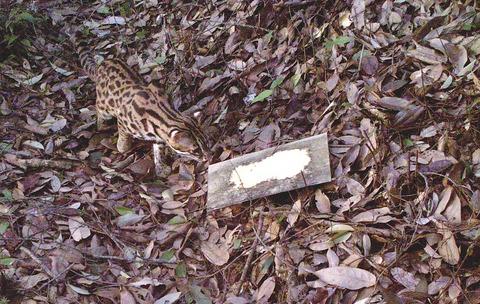当前位置:
X-MOL 学术
›
Anim. Conserv.
›
论文详情
Our official English website, www.x-mol.net, welcomes your
feedback! (Note: you will need to create a separate account there.)
Combining camera‐trap surveys and hunter interviews to determine the status of mammals in protected rainforests and rubber plantations of Menglun, Xishuangbanna, SW China
Animal Conservation ( IF 2.8 ) Pub Date : 2020-04-17 , DOI: 10.1111/acv.12588 G. Huang 1, 2 , R. Sreekar 1, 3 , N. Velho 4 , R. T. Corlett 1 , R.‐C. Quan 1 , K. W. Tomlinson 1
Animal Conservation ( IF 2.8 ) Pub Date : 2020-04-17 , DOI: 10.1111/acv.12588 G. Huang 1, 2 , R. Sreekar 1, 3 , N. Velho 4 , R. T. Corlett 1 , R.‐C. Quan 1 , K. W. Tomlinson 1
Affiliation

|
Hunting and deforestation are the two biggest threats to vertebrates in Southeast Asia. In the last 50 years, monoculture rubber plantations replaced large areas of tropical rainforests in Xishuangbanna, southwest China. We set up camera traps at 109 stations (57 in forest reserves and 52 in rubber plantations) to determine the distribution of mammal species in Menglun, Xishuangbanna. We also interviewed 37 experienced hunters (mean age: 54) in the study area to understand their perceptions of species abundance trends. We used hierarchical multispecies occupancy modelling to determine the effect of distance to village, distance to forest edge and elevation on mammal occupancy after accounting for imperfect detection. We used non‐parametric tests for the rank data to evaluate perceived species trends. Using a combination of historical literature (1954–1985), hunter interviews, direct observations and camera‐trap surveys, we only recorded 56% (15 out of 27) of the medium‐to‐large sized (>1 kg) mammal species known previously from the study region. Interviews suggested that current population densities of all extant mammal species are below historical levels. Our camera traps captured 11 mammal species in the forest reserve and only two species in rubber plantations. Low capture rates (10 captures) in rubber mean we could only determine mammal occupancy in forests. Environmental variables did not affect community level mammal occupancy in forests, but common muntjac (Muntiacus muntjak) and the northern pig‐tailed macaque (Macaca leonina) avoided forest edges. At the time of the survey, hunting was still prevalent in the region. Therefore, conservation interventions that end both hunting and deforestation are urgently needed to stabilize and increase mammal populations in the region.
更新日期:2020-04-17











































 京公网安备 11010802027423号
京公网安备 11010802027423号